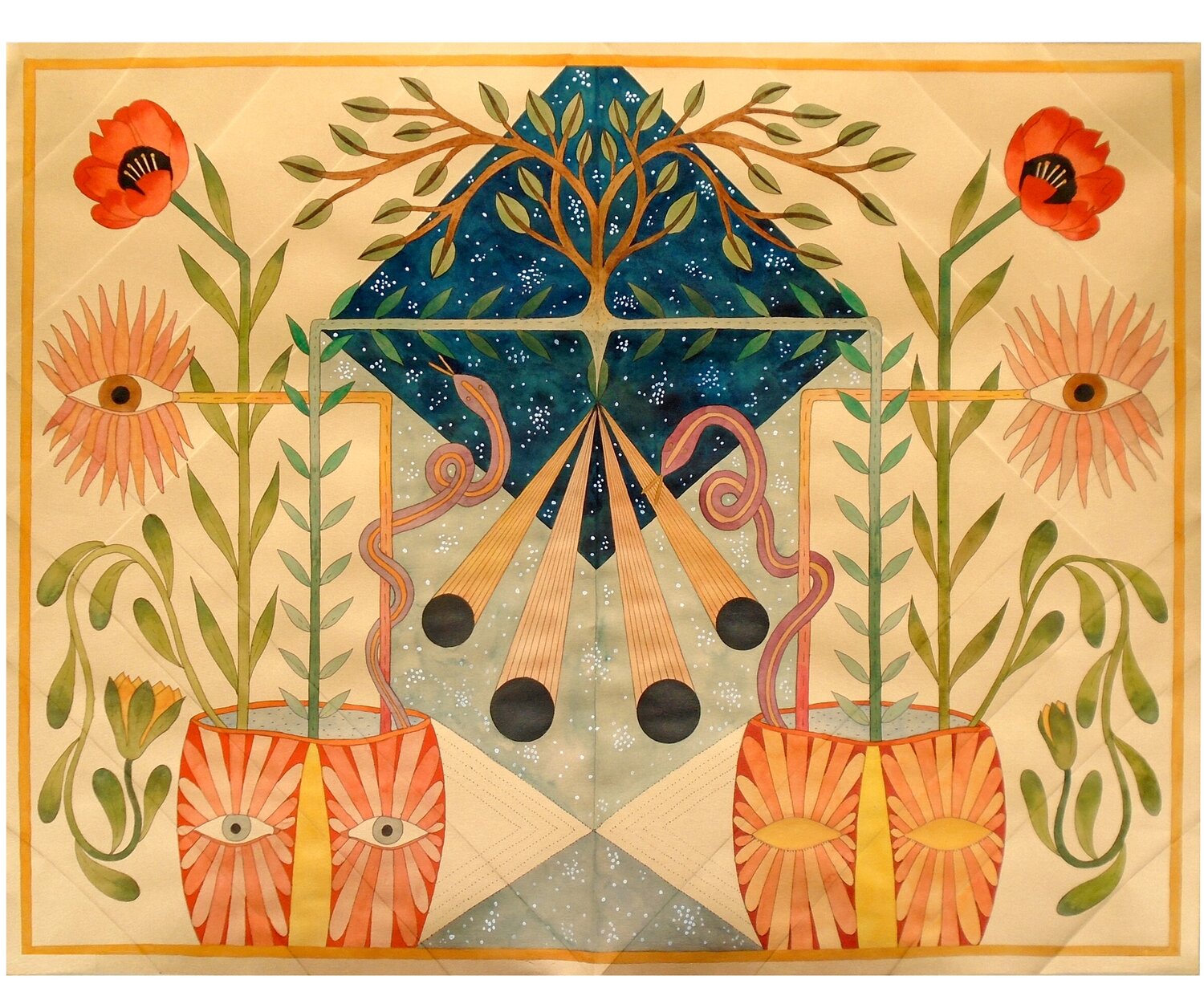
Rithika Merchant: Mirror of the Mind

Indian artist Rithika Merchant moved to Lisbon in her 20s for an artist residency. She has now been based in Barcelona for 10 years, still dividing her time between there and her native Mumbai, where she is represented by Hena Kapadia’s TARQ gallery.
The painter has a distinctive style. Her works are colourful, intricately detailed and heavily two-dimensional – all of which are characteristics of Mughal painting that have long fascinated the artist. For her latest solo exhibition, at Galerie LJ in Paris, Merchant also looked to Indian tribal painting of the Gondi, Meera and Kalighat traditions for inspiration.

Many of these tribal artists have coded ways of leaving signatures on their works – often through symbols or repeated images. “If you’re well versed in these signatures, you can identify the artist from them,” explains Merchant. Similarly, she too employs repeated symbolic imagery as a way of leaving her own imprint on the work and on its viewer.
From the green chillies in the painting Nazarbattu to the multicoloured kite in the Patang, Merchant represents images that recall her Indian ancestry. Objects like these form part of the artist’s exploration of objects as identity markers: “There are so many objects that are passed down through generations that are clues to your lineage,” she says. “In any Indian house you find metal glasses for drinking water – I have glasses just like those in my home in Barcelona.”


By carrying the memories of such objects across global boundaries, and by representing them in her work, the artist wants to present a universal kind of storytelling, one that crosses borders and is about collective roots. Rather than tying the symbols too closely to one culture, she uses them to weave together several of them – like with the kite in Patanag. Kites are are traditionally flown in certain parts of India during Sankranti, a harvest festival in January – but kite-flying is a strong tradition in many cultures of the world, like China, Merchant explains. It is much the same with mask-making, another frequent motif in Merchant’s paintings.

The majority of the works, all of which were specially created for this exhibition, have now been sold – and the buyers have largely been French and European. Despite drawing specifically on her own Indian ancestry when creating art, Merchant feels that is is by tapping into universal ideas and images that her works speak to people from different cultures and backgrounds.
The painting Pachisi, for example, depicts an ancient Indian game by the same name, which is believed to have formed the basis of many games played today the world over, like Ludo. The game board layout of the painting is instantly recognisable and awakens deep and fond memories in the viewer. “I like tapping into these ideas that everyone can relate to,” she says. “It’s interesting to see people recognising something, even though they don’t quite know why.”






